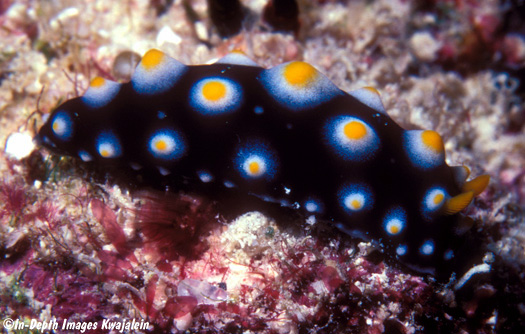
Phyllidia carlsonhoffi is sporadically common in the Marshalls. It is never present in large numbers, but at times single or paired specimens can be found with some regularity. Curiously, in recent years we have seen very few specimens, finding mostly P. madangensis instead; in years past, the opposite was true. What we call Phyllidia carlsonhoffi varies considerably, as can be seen from the photos below, and there is no guarantee they are all the same species. It is similar in color to Phyllidia madangensis, P. tula and P. varicosa, among others. Usually about the same size and shape as P. madangensis, P. carlsonhoffi can be distinguished by the presence of a dark line running lengthwise on the bottom of the foot in P. carlsonhoffi. The differences between P. carlsonhoffi and P. madangensis and the difficulties telling them apart are discussed in more detail on the P. madangensis page. Compared with other species that also possess a dark line on the foot sole, Phyllidia carlsonhoffi is narrower and usually smaller than P. tula and P. varicosa, and the dorsal bumps are whitish to cream colored under the orange tips; in all of those other three species, the bumps below the orange tops are usually bluish and cover more of the dorsum, giving the impression of a more bluish animal rather than primarily black. Brunckhorst's (1993) description of this species specifically notes the "black background color with cream tubercules which are capped in yellow." No blue. Further, Brunckhorst specficially mentions that the dorsal tubercles "are evenly spaced with alternating large and small tubercles," a feature clearly shown in his figure of the species and reproduced at the bottom of this page although not always obvious on our specimens.
Phyllidia carlsonhoffi lives in a variety of habitats at Kwajalein and Enewetak Atolls, from shallow subtidal lagoon reefs at depths as shallow as 1 meter to ledges on the seaward slope at least as deep as 25 meters. John and Lynette Flynn figure a large specimen from Rongelap. It is usually found exposed on the reef or in ledges during the day.

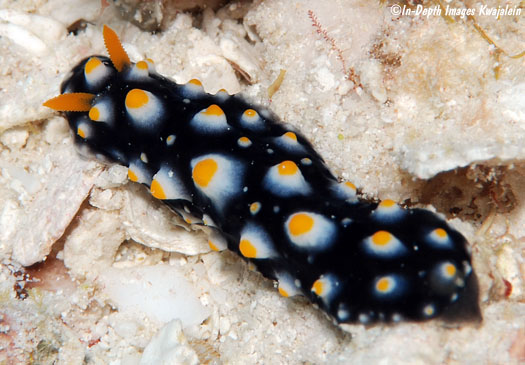
A common feature of P. carlsonhoffi is the presence of small bumps sparsely arranged between the more or less regularly distributed larger orange-tipped bumps.
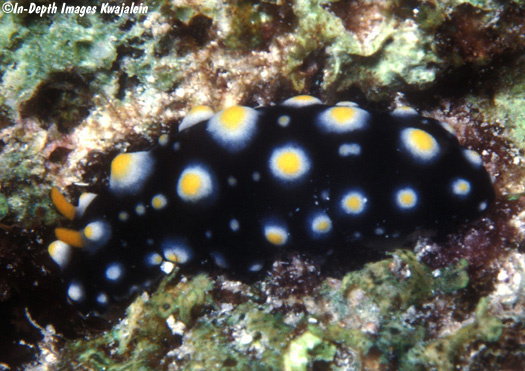
A close view of the anterior end and orange rhinophores.
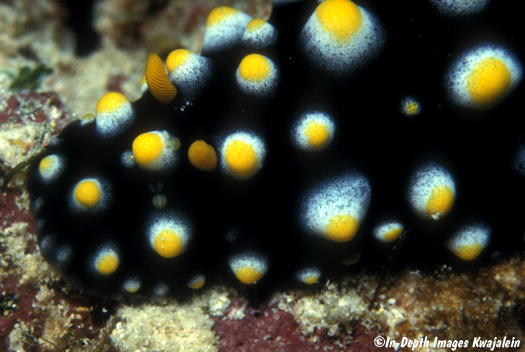
A mating pair, with their reproductive systems aligned for reciprocal fertilization.
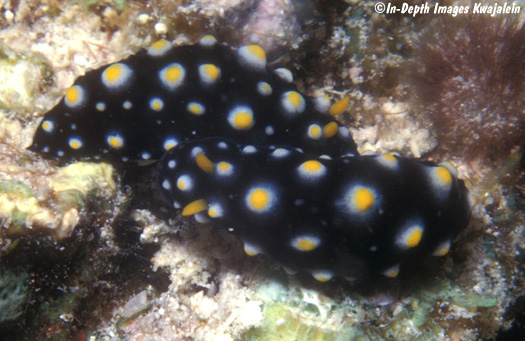
These appeared to be eating the orange-yellow sponge.
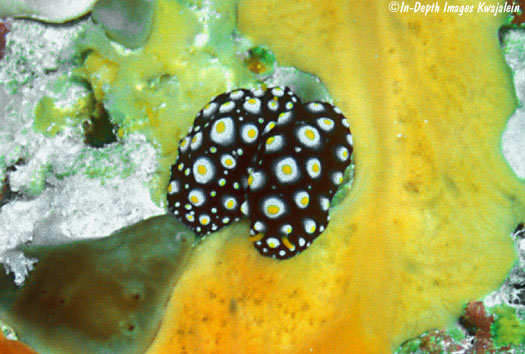
The one below had less distinct lighter borders to the dorsal yellow warts, but we still think it is P. carlsonhoffi. It had a very distinct dark line running down the bottom of its foot. This animal was exposed on a Kwajalein lagoon reef flat in about 3m of water on 31 August 2009.
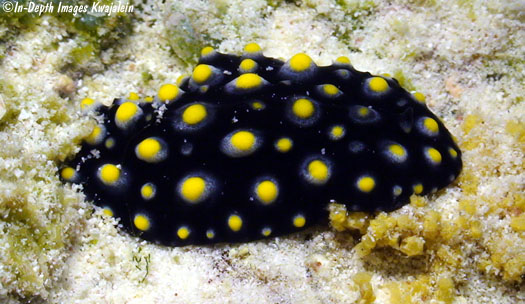
The two shots below showanother puzzling animal. The dorsal bumps were highly inflated, but otherwise it was similar to Phyllidia carlsonhoffi, including the line on the bottom of the foot.
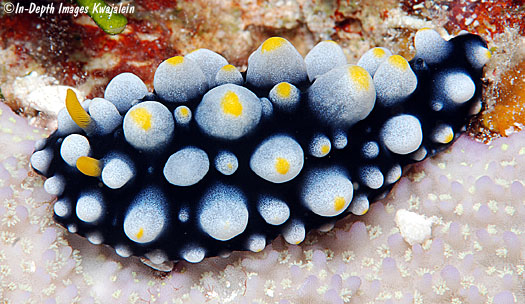
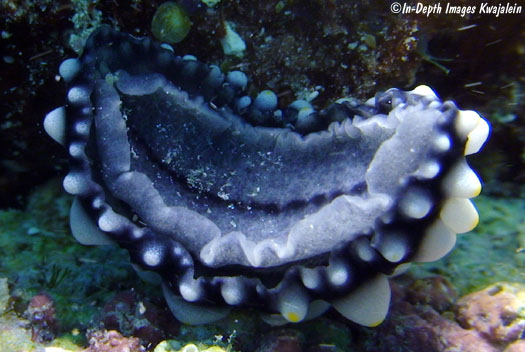
The specimen below was photographed on the Kwajalein Atoll seaward reef on 18 April 2010, exposed on the reef at a depth of about 10m. It had a distinct line on the bottom of its foot.
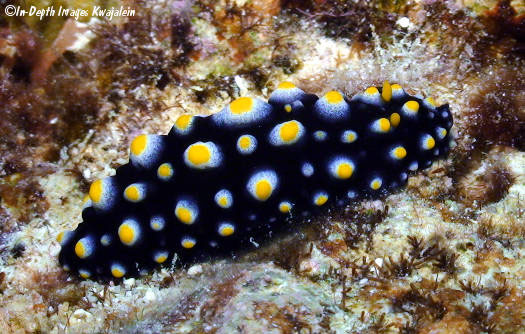
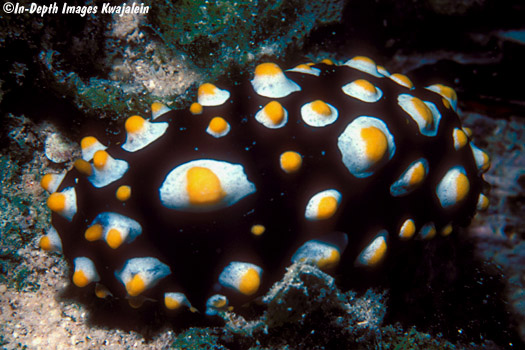
Specimen with eggs.
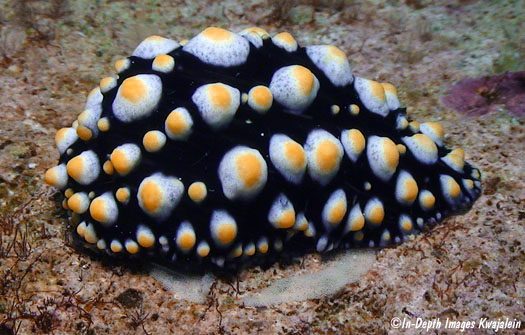
It is interesting that the shade of the orange or yellow color on the dorsal tubercles seems to match the color of the rhinophores and is sometimes almost entirely lacking.
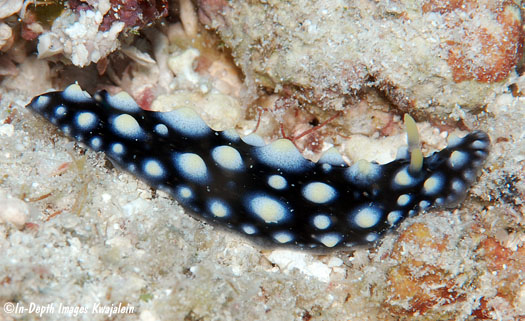
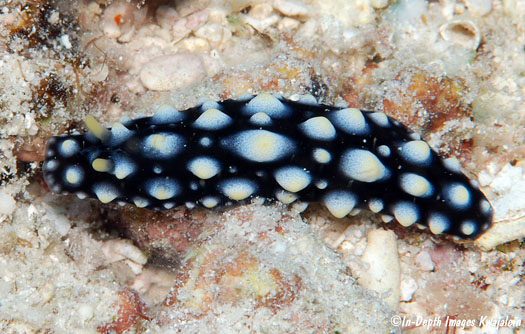
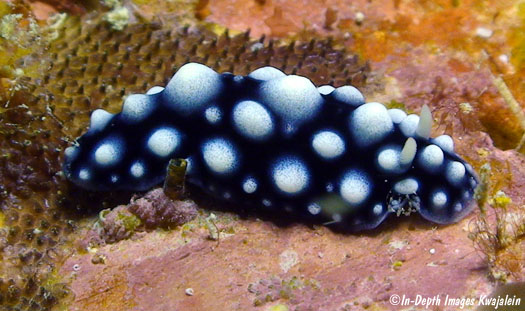
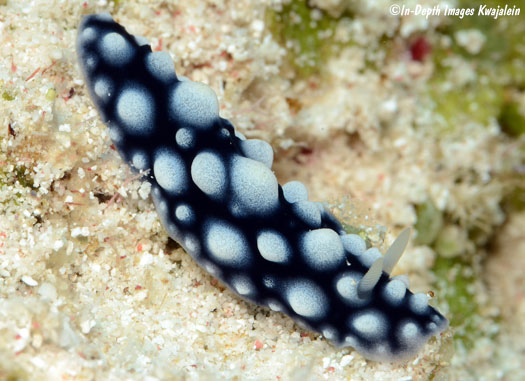
Below is Brunckhorst's (1993) figure of Phyllidia carlsonhoffi from the original description.
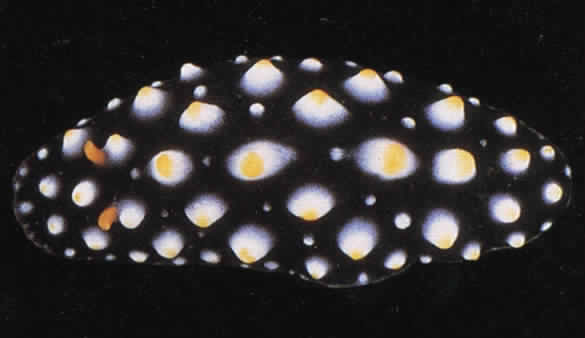
Created 25 December 2006
Updated 12 June 2021